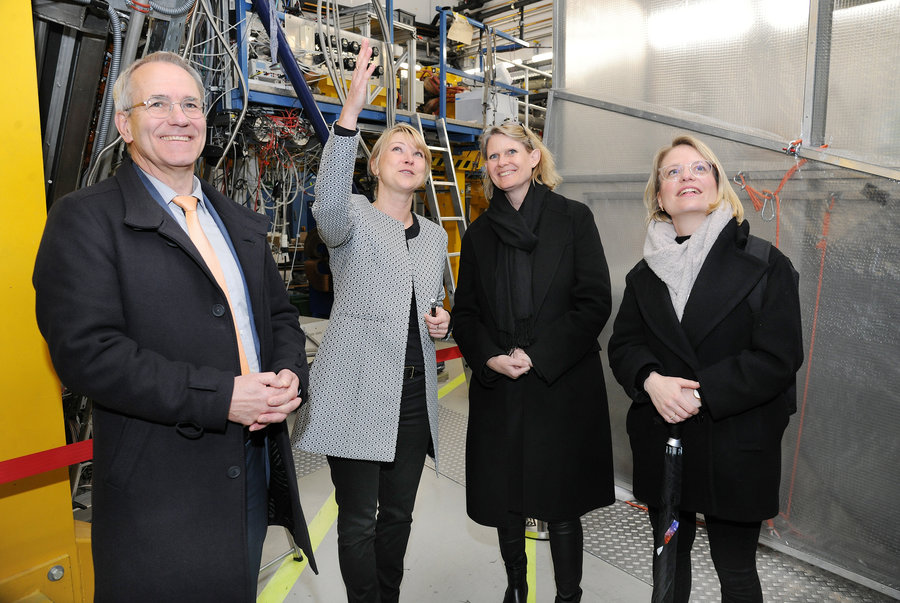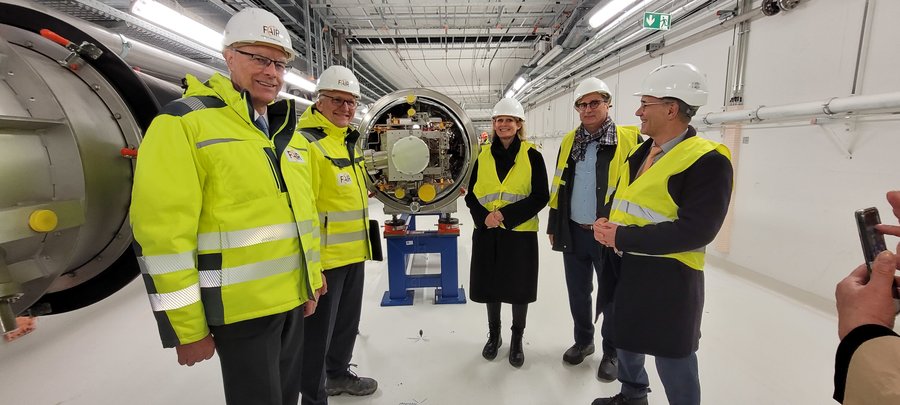BMBF State Secretary Judith Pirscher visits GSI and FAIR
29.04.2024 |
The progress of the FAIR project and the ongoing research activities were the focus of a visit to the GSI/FAIR facilities by Judith Pirscher, State Secretary at the Federal Ministry of Education and Research (BMBF). The State Secretary was welcomed by Professor Paolo Giubellino, Scientific Managing Director of GSI and FAIR, and Jörg Blaurock, Technical Managing Director. During her visit, she gained extensive insight into GSI/FAIR’s scientific and technical prospects for the coming decades.
State Secretary Pirscher was impressed: “It was an extremely interesting meeting with great scientists who are carrying out cutting-edge research at GSI’s accelerator facilities. Moreover, I am very pleased to see that the construction of the international accelerator centre FAIR is progressing well. It is becoming increasingly clear that FAIR will go from a construction project to become a research infrastructure with the potential to make discoveries of global importance. One of the largest research projects in the world is currently being conducted here. I am confident that the star power of this facility will attract the best young scientists to come to the region.”
State Secretary Pirscher was given an extensive tour, allowing her to see the research facilities and the FAIR construction site for herself and talk to the scientists.
The tour included the medical treatment unit of the biophysics department, the HADES experiment and the PHELIX laser experiment. During a visit to the FAIR construction site, the State Secretary was shown the current construction progress of FAIR and the first technical installations.
At the international accelerator center FAIR, extreme forms of matter that usually only exist in neutron stars, supernovae, stars or large gas planets are to be produced and studied in the lab. FAIR will thus investigate “the universe in the laboratory”. FAIR's future research activities will build on the successful research carried out at GSI. Scientists from all over the world will use the different areas of GSI and FAIR to conduct unique experiments and obtain new insights into the structure of matter and the evolution of the universe.
At the medical radiation unit where, in 1997, cancer patients were successfully treated with ion beams for the first time in Europe, future research will focus on technical and radiobiological advancements in ion beam therapy and on space research. This will include assessments of radiation exposure during long-term space missions in collaboration with the European Space Agency (ESA).
The HADES detector (High Acceptance Di-Electron Spectrometer) is used to study high-energy nuclear collisions. HADES will allow scientists to understand the properties of hot, highly compressed nuclear matter as it is produced in the universe, for example, when neutron stars collide.
The PHELIX (Petawatt High-Energy Laser for Ion Experiments) laser facility is one of the most powerful lasers in the world. It can deliver extremely short laser pulses of up to 1 kilojoule of energy or up to half a petawatt of power. Among other things, PHELIX could in future define the conditions for improving the stability of laser-plasma interactions, as required for inertial confinement fusion. (CP)



















